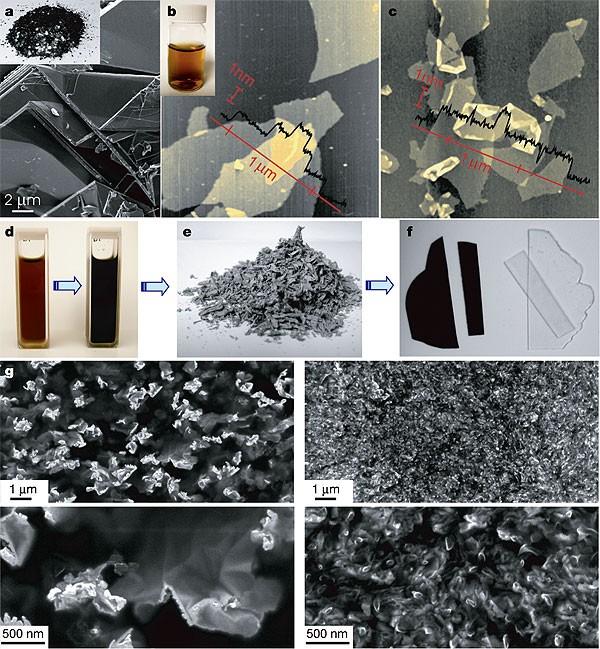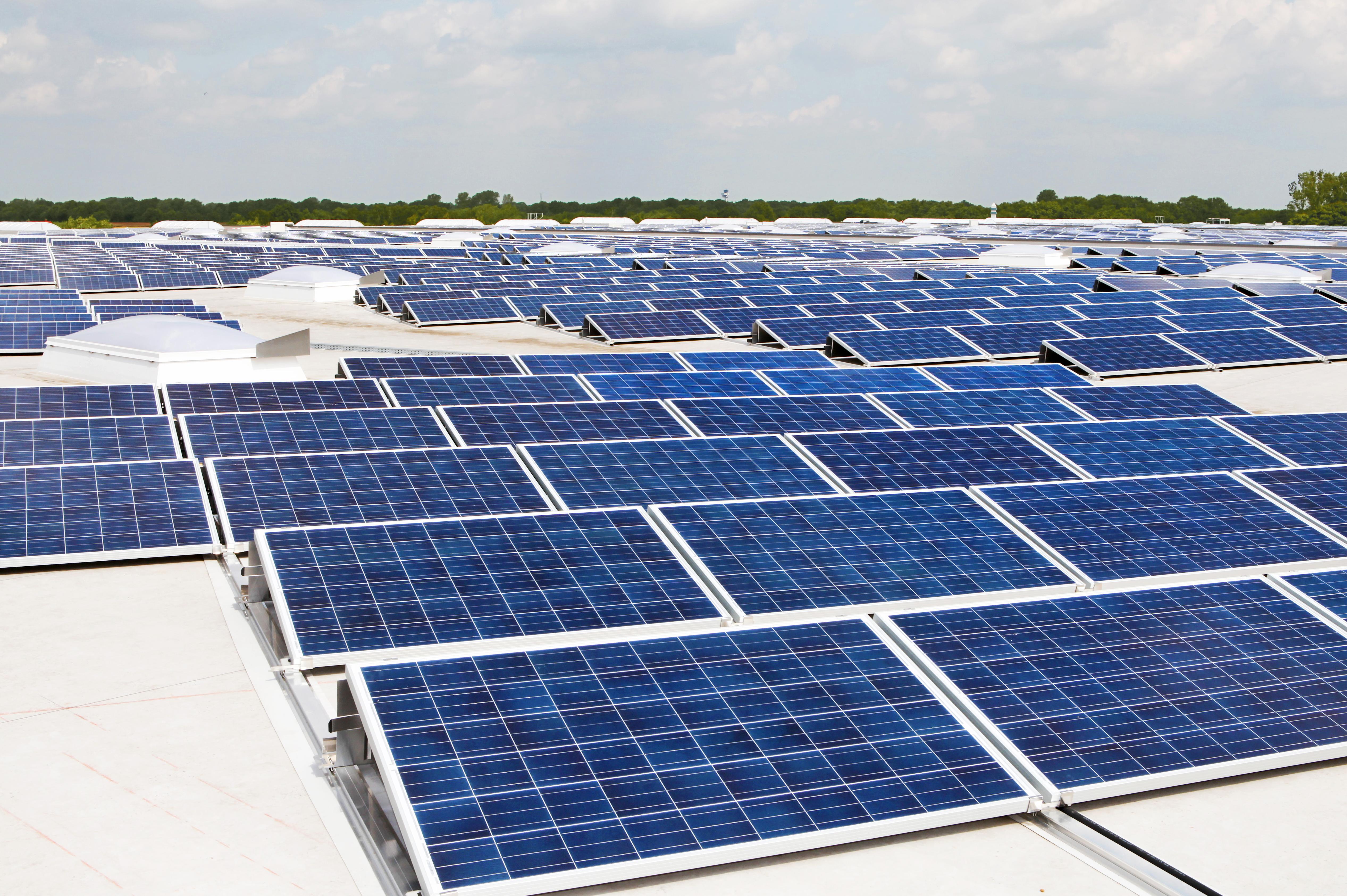In the quest for sustainable energy solutions, solar cells have emerged as a beacon of promise, harnessing the sun’s radiant energy to power our world. However, the quest for efficiency and durability remains an ongoing challenge in the field of photovoltaics. Enter the dynamic duo of graphene and polymers, weaving together a new chapter in perovskite solar cell technology. By reinforcing perovskite lattices with graphene-infused polymers, researchers are unlocking a pathway to enhance the structural integrity and longevity of these cutting-edge solar cells. This innovative approach not only seeks to overcome the traditional limitations of perovskite materials but also aims to usher in a new era of resilient and efficient solar technology. In this article, we delve into the science behind this groundbreaking advancement, exploring how the marriage of graphene and polymer composites could redefine the future of solar energy.
Exploring the Synergy of Graphene and Polymer Composites in Perovskite Structures
The remarkable integration of graphene with polymer matrices in perovskite structures presents a groundbreaking opportunity for enhancing the durability and efficiency of solar cells. Graphene, known for its exceptional electrical and mechanical properties, when combined with polymers, creates a composite that not only retains functionality but also offers enhanced mechanical strength and flexibility. This unique synergy allows for the development of solar cells that can better withstand environmental stressors while maintaining high energy conversion rates.
Utilizing a variety of polymer types can further optimize the composite properties. Some notable benefits of incorporating graphene into polymer-perovskite composites include:
- Improved Conductivity: The addition of graphene boosts the charge transport pathways within the perovskite lattice, leading to enhanced photocurrent generation.
- Enhanced Stability: Graphene’s barrier properties can significantly reduce moisture penetration, a common degradation pathway for perovskite materials.
- Lightweight Design: The lightweight nature of graphene-polymer composites contributes to overall system efficiency, making solar technologies more accessible.
| Property | Conventional Perovskite | Graphene-Polymer Composite |
|---|---|---|
| Mechanical Strength | Low | High |
| Moisture Resistance | Poor | Excellent |
| Weight | Standard | Lightweight |
| Charge Carrier Mobility | Moderate | High |
The future of solar technology is being redefined as researchers continue to explore the intersections of nanotechnology and material science. By optimizing the combination of graphene and polymers, the next generation of perovskite solar cells not only promises higher efficiencies but also longer lifespans, pushing towards sustainability in energy solutions. As we delve deeper into this innovative fusion, the potential applications in portable and flexible solar energy solutions look increasingly promising.

Enhancing Mechanical Stability and Efficiency of Solar Cells through Innovative Reinforcement
The integration of graphene-polymer composites with perovskite solar cells has emerged as a groundbreaking approach to bolster both the mechanical stability and the energy efficiency of these photovoltaic devices. The extraordinary properties of graphene, coupled with the lightweight and flexible characteristics of polymers, allow for the creation of a robust reinforcement framework that enhances the durability of solar cells. This innovative combination not only mitigates the vulnerability to environmental factors such as moisture and temperature fluctuations but also ensures sustained performance over extended periods.
One of the most significant benefits of this revolutionary reinforcement strategy is the improved mechanical integrity afforded by the graphene lattice. The incorporation of graphene into the polymer matrix leads to a significant increase in tensile strength and flexibility, allowing solar panels to withstand varying atmospheric conditions without degradation. Additionally, this novel composite material exhibits superior thermal stability, which translates to enhanced operational efficiency, particularly under high-temperature conditions that commonly plague traditional solar cell designs.
Furthermore, the innovative reinforcement technology showcases an attractive balance of weight and performance, as it effectively reduces the overall mass of solar cell structures. This aspect is crucial in applications ranging from residential rooftops to large-scale solar farms, where the weight of renewable energy systems must be carefully considered. By adopting such advanced materials, the solar energy sector can anticipate not only an increase in efficiency ratings but also a promising step toward more sustainable and resilient energy solutions:
| Feature | Traditional Solar Cells | Graphene-Polymer Reinforced Cells |
|---|---|---|
| Mechanical Stability | Moderate | High |
| Weight | Heavy | Lightweight |
| Thermal Stability | Vulnerable | Superior |
| Longevity | Shorter Lifespan | Extended Durability |

Understanding the Role of Graphene-Polymer Interactions in Longevity and Performance
The integration of graphene within polymer matrices significantly enhances the structural integrity and longevity of perovskite solar cells. By introducing graphene, a material renowned for its remarkable mechanical properties and electrical conductivity, the stability of organic-inorganic hybrid perovskites can be improved. This reinforcement mitigates the common issues of degradation that these solar cells face, especially under exposure to environmental stressors such as moisture and UV radiation. The seamless interaction between graphene and the polymer not only strengthens the composite but also facilitates efficient charge transport, which is critical for optimal cell performance.
Critical to understanding how these interactions work is the concept of interfacial adhesion. The strong van der Waals forces between graphene and polymer chains promote a cohesive bond that enhances structural durability. The size and distribution of graphene flakes within the polymer matrix can significantly affect the resulting mechanical and electrical properties. Several studies have shown that a well-optimized loading of graphene can yield composites that withstand fatigue, thermal cycling, and other detrimental conditions, ensuring that the solar cells maintain their efficiency over prolonged periods of use.
Moreover, it is essential to explore the synergistic effects arising from this combination. Key benefits include:
- Enhanced electrical conductivity: Graphene acts as a conductive filler, improving charge carrier mobility.
- Increased mechanical strength: The addition of graphene significantly boosts tensile strength, allowing for more robust and resilient solar cell structures.
- Thermal stability: The thermal properties of graphene help in managing heat dissipation, protecting sensitive materials within the perovskite lattice.
These advantages illustrate the potential of graphene-polymer interactions as a game-changer in the quest for durable and high-performance solar cells, revealing a path towards more sustainable energy technologies.

Future Directions for Sustainable Solar Cell Development: Recommendations for Research and Application
As the push for renewable energy intensifies, the integration of graphene and polymer materials into perovskite solar cell structures offers a promising avenue for enhancing the durability and efficiency of these devices. Future research should focus on the nanomechanical properties of graphene, exploring how its unique strength and conductivity can be optimized within a polymer matrix. Key considerations should include:
- Material Synthesis: Investigating methods for achieving uniform dispersion of graphene within the polymer, which can lead to improved electron mobility.
- Layer Configuration: Experimenting with different layering techniques to maximize light absorption while minimizing the degradation caused by environmental factors.
- Scalability: Developing production processes that can transition from laboratory-scale innovations to mass production without compromising quality.
Collaboration between researchers and industry stakeholders will be essential for translating laboratory findings into practical applications. It is advisable to set up interdisciplinary teams that can tackle the complexities of scaling up these advanced materials for commercial use. Initiatives could include:
- Field Test Programs: Implementing pilot programs in real-world settings to gather performance data and user feedback.
- Public-Private Partnerships: Engaging in partnerships that can fund and facilitate large-scale manufacturing and deployment.
- Regulatory Compliance: Establishing guidelines for safety and environmental impact, ensuring that new materials meet industry standards.
Furthermore, optimizing the lifecycle of graphene-polymer reinforced solar cells will be crucial in making them a viable option in the renewable energy market. Future investigations should incorporate:
| Research Focus | Potential Impact |
|---|---|
| End-of-life Strategies | Minimize waste by developing recycling processes for old solar cells. |
| Energy Payback Time | Reduce the energy required for production vs. energy generated over the cell’s lifetime. |
| Cost Analysis | Assess the economic viability compared to traditional solar technologies. |
The Conclusion
the innovative marriage of graphene and polymers with perovskite lattices represents a significant leap forward in the quest for durable and efficient solar cells. As researchers continue to unravel the intricate interplay between material properties and environmental resilience, the potential for these advanced composites to revolutionize renewable energy sources becomes increasingly evident. By harnessing the unique strengths of graphene’s remarkable conductivity and mechanical stability alongside the versatility of polymers, we pave the way for the next generation of solar technology. As the pursuit of sustainability intensifies, the advancement of graphene-polymer reinforced perovskite systems not only enhances the longevity of solar cells but also draws us closer to a brighter, more sustainable future. The horizon is rich with possibilities, and the journey towards unleashing the full potential of these materials has only just begun.































